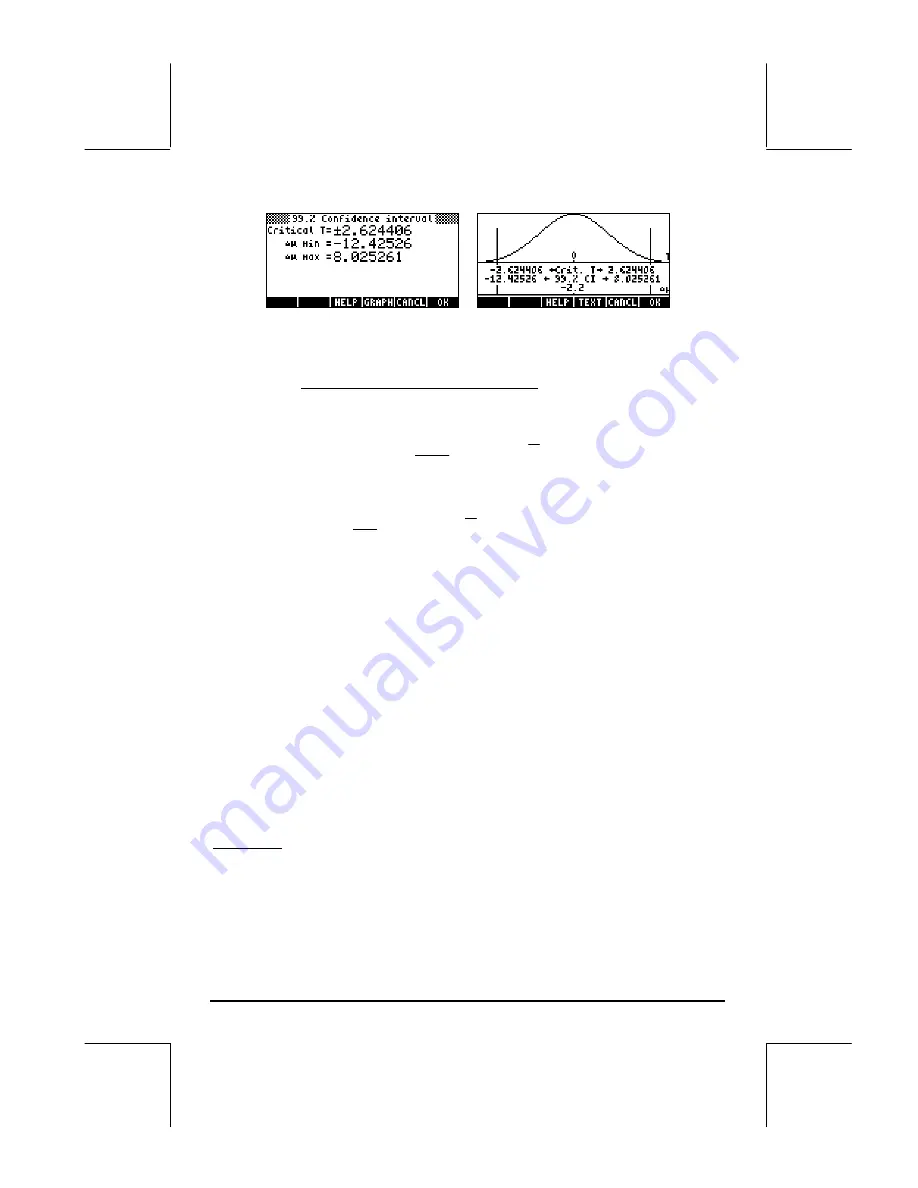
Page 18-33
Confidence intervals for the variance
To develop a formula for the confidence interval for the variance, first we
introduce the sampling distribution of the variance: Consider a random
sample X
1
, X
2
..., X
n
of independent normally-distributed variables with mean
µ
, variance
σ
2
, and sample mean
X. The statistic
∑
=
−
⋅
−
=
n
i
i
X
X
n
S
1
2
2
,
)
(
1
1
ˆ
is an unbiased estimator of the variance
σ
2
.
The quantity
∑
=
−
=
⋅
−
n
i
i
X
X
S
n
1
2
2
2
,
)
(
ˆ
)
1
(
σ
has a
χ
n-1
2
(chi-square)
distribution with
ν
= n-1 degrees of freedom. The (1-
α
)
⋅
100 % two-sided
confidence interval is found from
Pr[
χ
2
n-1,1-
α
/2
< (n-1)
⋅
S
2
/
σ
2
<
χ
2
n-1,
α
/2
] = 1-
α
.
The confidence interval for the population variance
σ
2
is therefore,
[(n-1)
⋅
S
2
/
χ
2
n-1,
α
/2
; (n-1)
⋅
S
2
/
χ
2
n-1,1-
α
/2
].
where
χ
2
n-1,
α
/2
, and
χ
2
n-1,1-
α
/2
are the values that a
χ
2
variable, with
ν
= n-1
degrees of freedom, exceeds with probabilities
α
/2 and 1-
α
/2, respectively.
The one-sided upper confidence limit for
σ
2
is defined as (n-1)
⋅
S
2
/
χ
2
n-1,1-
α
.
Example 1 – Determine the 95% confidence interval for the population
variance
σ
2
based on the results from a sample of size n = 25 that indicates
that the sample variance is s
2
= 12.5.






























